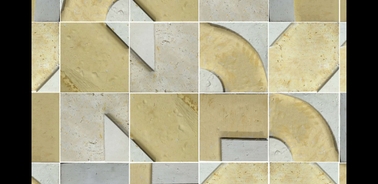- Home
- News And Events
- News
- Architecture Students From Ie University Design Segovia’s New Municipal Library
Architecture students from IE University design Segovia’s new Municipal Library

Students from IE University’s Design Laboratory (d-Lab) are working on a project headed by Professor Romina Canna aimed at remodeling the city’s old public library in order to provide a new added use of a Municipal Library. The project is led by Segovia city council with a view to relaunching one of the city’s most emblematic buildings, originally constructed in the 16th century. The key aim of the restoration project is to recuperate the building’s role as a public library in the fullest sense of the word, extending its services to create a Municipal Library in the center of Segovia.
In order to implement the remodeling project, Segovia City Council partnered with IE University’s Design Lab from the outset, giving students an excellent opportunity to collaborate with real architectonic projects. The Council also enjoys the collaboration of IE University’s FabLab, led by artist Maxon Higbee.
The project forms part of an institutional collaboration agreement between Segovia City Council and IE University, aimed at fostering relations between city and University. Participants in the presentation of the Municipal Library included the mayor of Segovia, Clara Luquero, Segovia’s regional councilor for Culture, Marifé Santiago, and professor of architecture and director of IE University’s d-Lab or Design Laboratory Romina Canna.
The result of the work carried out by IE University Architecture students is an original project that is both innovative and dynamic. It differentiates spaces based on what they are used for and on their architectonic features, using colors, furniture and decorative elements that reflect the city’s personality, multiculturalism, and reading/writing activities.
The design of different ambiances takes into consideration the different pace and reading habits of the people who will be using the building. Reading is seen as not merely the interpretation of books not only in printed form but in all other formats and any other kind of approach to reading, on both an individual and collective basis, formal and formal, for short and long periods, or at a young or more mature age.
The planned building can be used for reading and cultural events, the aim being to turn it into a cultural and educational hub in the heart of the city. The epicenter will comprise a book-filled library, around which a cultural cosmos will revolve. The new space will be sustainable, accessible to all, and open to diversity and a democratic heritage.
The building, which will house Segovia’s public library, founded in 1842, was formerly a primitive jail where Lope de Vega was held prisoner after he was sentenced in 1577. The building is located in Segovia’s Calle Real, the city’s main pedestrianized zone, and is one of Segovia’s most interesting public buildings from the renaissance period.
“The project consists of understanding and harnessing new reading habits from a design point of view, through the restoration and remodeling of an old sixteenth century prison. The building is deeply historical and the project seeks to highlight its severe features by reinventing the space from a fresh and contemporary perspective,” says Romina Canna.
One of the many exciting ideas proposed by this ambitious project, which was launched last December, is a study room for use by IE students during exam periods.
The IE students taking part in the project are Haitam Daoudi, Pierre Gavelle, Deiene González Uriarte, Nadine Kabani, Nathalie Lagard, Lijia Sun, Olalla Monteagudo Teira, Niccolo Coelewij and Lucía Sánchez Osende. The project also enjoys collaboration from IE University’s FabLab, coordinated by artist Maxon Higbee and dedicated to the material production of prototypes of students’ architectonic designs.
Romina Canna holds a Degree in Architecture from Rosario University (Argentina) and a Doctorate in Urbanism from Universidad Politecnica de Cataluña. She began her career in her home city of Rosario, and then continued her work in Chicago and Barcelona, undertaking a range of projects on different scales. From 2012 she has taught at IE University where she combines her academic work with research and her work in the field of architecture. She is the director of IE University’s d-Lab or Design Laboratory, where students work with real clients to provide architectonic solutions.